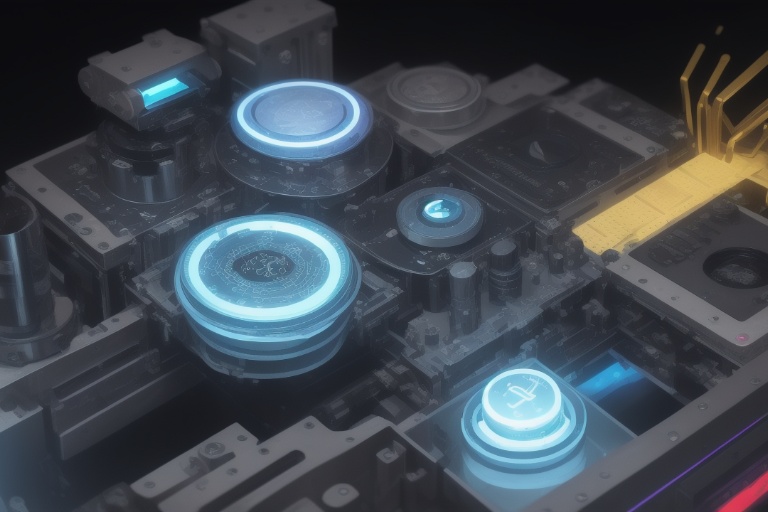The advent of artificial intelligence (AI) has revolutionized many aspects of our lives, including the way we create content. With AI-generated writing becoming more prevalent, the role of AI detectors—tools designed to differentiate between content created by humans and that created by AI—has become increasingly important. These detectors, also known as AI content detectors or AI writing detectors, provide critical insight into the authenticity of the written material. Within this article, we'll examine the functionality of AI detectors, the factors they consider, and their overall effectiveness. Let's embark on a journey to understand the current state and potential influence of AI detectors across industries like education and content moderation.
The advent of artificial intelligence (AI) has revolutionized many aspects of our lives, including the way we create content. With AI-generated writing becoming more prevalent, the role of AI detectors—tools designed to differentiate between content created by humans and that created by AI—has become increasingly important. These detectors, also known as AI content detectors or AI writing detectors, provide critical insight into the authenticity of the written material. Within this article, we'll examine the functionality of AI detectors, the factors they consider, and their overall effectiveness. Let's embark on a journey to understand the current state and potential influence of AI detectors across industries like education and content moderation.
Understanding AI Detectors
What exactly are AI detectors? In essence, they are sophisticated algorithms created to determine if a piece of writing has originated from an AI, such as the OpenAI's ChatGPT, or from a human author. The importance of these detectors is evident in scenarios where the distinction between AI-generated and human-produced content is vital—for instance, in academic settings where original work is paramount or in news media where authenticity is critical.
So, how do these AI detectors function, and what aspects of writing do they scrutinize to make their assessments? Here are a few key metrics used:
Key Metrics for AI Detection
- Perplexity: It measures how well a language model predicts a sample of text. Typically, human writing tends to be more variable and less predictable than AI-generated text which might follow more consistent patterns.
- Burstiness: This examines the variation in sentence length and complexity within a text. Human writing often demonstrates a natural ebb and flow, whereas AI-generated content may lack this unevenness.
- Semantic Coherence: This refers to the degree to which a text makes sense contextually. AI detectors review content for logical progression and consistency, areas where AI might sometimes falter.
The Reliability Challenge
Despite their increasing usage, questions remain regarding the reliability of AI detectors. Although able to provide some insight, they are not foolproof. For instance, highly sophisticated AI could potentially mimic the nuance of human writing, making it harder for detectors to differentiate accurately. Furthermore, overly simplistic or formulaic human writing might be misidentified as AI-generated.
AI Detectors in Education and Content Moderation
Within the educational realm, AI detectors have the potential to uphold academic integrity by helping educators identify unoriginal work. However, it's essential for detectors to be used thoughtfully, as part of a broader context that includes human judgment.
In the world of content moderation, AI detectors can aid in filtering out content that may not meet certain authenticity standards, especially on platforms that prioritize user-generated material. However, the same caution applies—the detectors are tools to assist, not to replace, human discernment.
Advancements and Ethical Considerations
As AI technology continues to evolve, so too will AI detectors. This progress is likely to spark discussions about ethical considerations, such as ensuring that AI detectors do not infringe upon individuals' creativity or stifle the development of AI in writing.
Conclusion
AI detectors represent a significant step forward in our ability to discern the origins of written content. Although they still face reliability issues and should not be used in isolation, their benefits in maintaining authenticity and integrity in writing are undeniable. As we navigate the balance between technological innovation and ethical application, it's clear that AI detectors will remain a crucial topic in the conversation around artificial intelligence.
Our exploration into AI detectors has affirmed their critical presence in a world increasingly influenced by AI-generated content. While they may still be in their fledgling stages with ample room for growth and refinement, these detectors are a testament to our commitment to uphold the quality and originality of written material. As we advance, the continuous development and responsible use of AI detectors will be pivotal in preserving the authenticity that is the hallmark of human ingenuity.
Endeavors to enhance these detectors must be paralleled with conversations around their ethical applications to ensure that these tools serve to complement human capabilities, rather than undercut them—a goal that is both essential and attainable as we strive to stay ahead of the curve in the digital age.
Information for this article was gathered from the following source.

